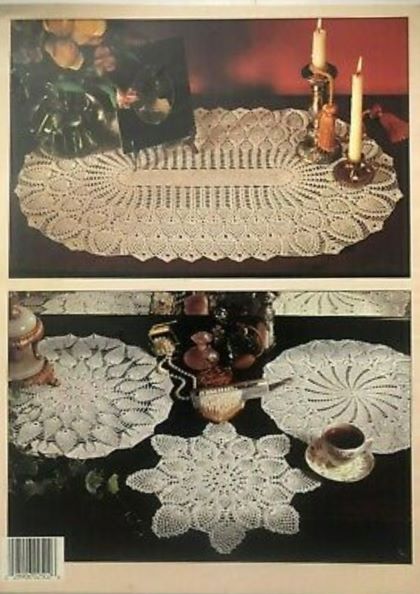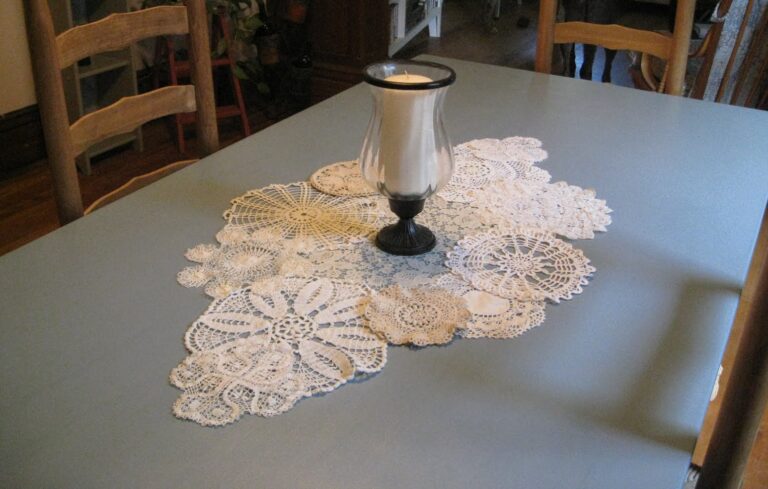
Doilies, a history.
I opened a drawer and discovered a handmade doily by my husband’s grandmother. Instead of dismissing it as a quaint relic, I examined the lace circle with curiosity. As a crocheter myself, I wondered if I could replicate it. What was the purpose of doilies anyway? I remembered the paper doilies we used to make snowflakes in kindergarten.
Doilies: a little history you never knew you wanted to know. Crocheting became more common after John Mercer invented Mercerized cotton in 1844. This new thread was stronger and more durable. The first mention of a doily was in 1866, as a “small wine-glass napkin” with the maker’s name (Doiley). The BBC’s magazine “Home & Antiques” traced the origin of the doily to the surname ‘Doily,’ “from the surname ‘Doily,’ a London firm of linen merchants who made fringed napkins in the 1700’s. From 1711 a doily was a small ornamental napkin used for dessert.” Imagine wiping your mouth with one of these!
Doilies were more widely found in the mid to late 1800’s and became popular in the Victorian home. Young ladies were to have a collection of them for their future marriage. The delicate stitching was a sign of their skill and suitability as wives. (Times have changed, thankfully.) Today, I admire these patterns as amazing works of art. These lovely “napkins” deserve more appreciation. The doily’s intricate designs and delicate stitching can add beauty and charm to our modern homes.

